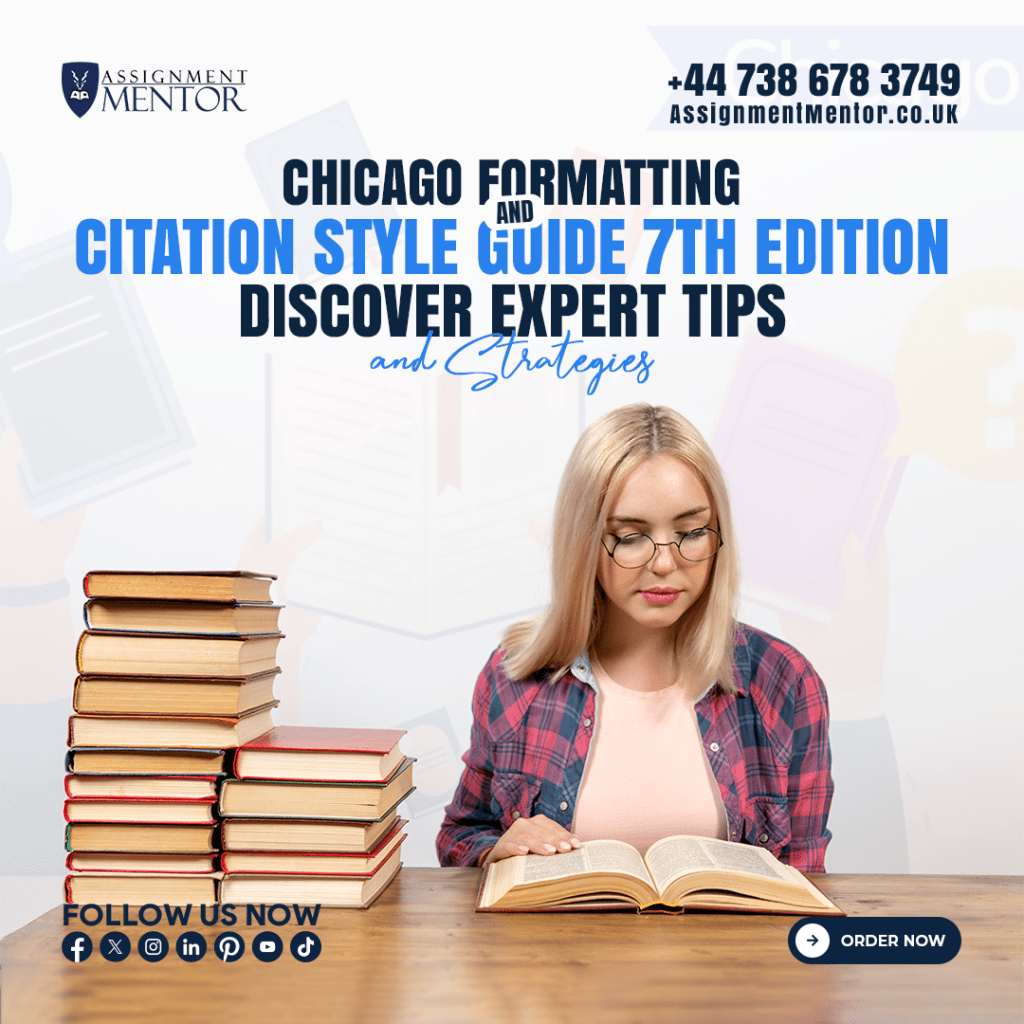The Chicago Manual of Style, one of the most widely recognised, accepted, and popular academic and professional style guides, may be used. It is especially so in the field of history and the humanities. Chicago Manual’s release of its 7th edition provides writers a wealth of guidance to achieve clarity, precision and consistency in their work. However, this blog is a more in-depth tutorial on the finer points of Chicago style formatting and citations.

Understanding Chicago Style
Chicago style offers two primary documentation systems: Two systems of documentation are commonly used: The Notes-Bibliography System (NB) and the Author Date System. Authors will use one of these two systems, based on the nature of the subject matter in their work or the type of the sources cited; the NB system is typically used in the humanities, and the Author-Date system is commonly used in the sciences and the social sciences.
General Formatting Rules
The Chicago Manual of Style provides specific formatting rules that enhance the readability and professionalism of documents:
Font and Size: Use a readable font such as Times New Roman or Arial in 12 pt. font size.
Margins: Set all margins at least one inch.
Line Spacing: The main text should be double-spaced; block quotes, table titles, and figure captions should be single-spaced.
Page Numbers: Place page numbers in the header or footer and page number all pages except the title page.
Title Page: The top of every page will be centred and often include the title, author’s name, course, and date.
Notes-Bibliography System
The footnotes (or endnotes) in the text, followed by a bibliography at the end, are the characteristics of the NB system. Thorough Chicago style it is required and ideal for literature, history, and the arts.
Footnotes and Endnotes
Placement: Endnotes must appear on a separate page at the end of the chapter or document; footnotes follow the page on which they appear.
Format: To have a note in the text, use a superscript number. If there is little or no text to work from, the corresponding note should have the same number followed by a period and the citation details. Notes should be indented.
Content: Full publication details are included the first time a source is cited, and a shortened form is used for subsequent in text citation features.
Bibliography
Order: List entries alphabetically by the author’s last name.
Hanging Indents: For each entry, use a hanging indent.
Details: For cite, include author, title, place of publication, publisher, date of publication, and, where accessed electronically, a URL or DOI.
Author-Date System
The Author-Date system is the most frequently used in the sciences and the social sciences. However, it provides brief parenthetical citation within the text of your paper and a complete detailed reference list at the end.
In-Text Citations
Format: Give the author’s last name, followed by the year of publication, and if relevant, the page number(s).
Example: (Smith 2020, 15)
Reference List
Organisation: The reference list is sorted alphabetically by the author’s last name, just as a bibliography is.
Content: Give the author’s name, the year of publication, title, and publication data for each citation. Include the article’s journal title, volume, issue, and page numbers. For books, name your city of publication and the publisher.
Citations Formatting for Different Sources
This chapter will provide you with information on Chicago style citations for different sources.
Here are guidelines for several common source types:
Books
Single Author: First Name Last Name. Title of Book. New York: Date published. Place of Publication: Publisher.
Multiple Authors: First Name Last Name. Year. Title. Place of Publication: Publisher.
Journal Articles
Article in a Journal: Year. “Title of Article.” Last Name, First Name. Journal Name Volume Number (Issue Number): Page Numbers.
Websites
Basic Web Page: Year. Title of Web Page. Last Name, First Name. Name of Website. Accessed Month Day, Year. URL.
Common Issues and How to Avoid Them
Unlike other styles, the Chicago style is meticulous, with slight attention to detail. Here are some common issues and tips to avoid them while writing the research paper topics and books
1: Inconsistent Formatting
To be consistent, always double-check your document with the guidelines provided in the Chicago style .
2: Incorrect Information
Check your citations for accuracy in all details.
3: Over-Reliance on Software Tools
Citation generators can be very useful, but they aren’t always accurate. Manually check all entries.
CONCLUSION
By the Chicago Manual of Style (7th Edition), you can create appropriately organised scientific or professional content with correct citations and usage. Chicago style has an extensive system for organizing sources and serial texts whichever system you use: Notes-Bibliography or Author-Date. Following these guidelines makes a writer’s work more credible and more readable, and it enhances the ongoing dialogue in the writer’s related field.







